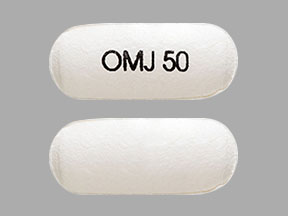
Nucynta ER Coupons & Savings Card – Discount Prices from $791.95
My prescription
Edit
50MG, Nucynta ER (60 Tablet Extended Release 12 Hours)
Select pharmacy

CVS
$807.08
COUPON PRICE
Walgreens
$791.95
COUPON PRICE
Albertsons
$856.31
COUPON PRICE
Walmart
$879.51
COUPON PRICENucynta ER savings card
Show this card to your pharmacist
Walgreens
$791.95
BIN
ID
PCN
GRP
015995
LHFA890064
GDC
GDRX
Powered by
More prescriptions for pain
More prescriptions for pain
Price history for Nucynta ER
60 Tablet Extended Release 12 Hours, 50MG
Average retail price for Nucynta ER
Average SaveHealth price for Nucynta ER
Our price history data is based on aggregated prescription data collected from participating pharmacies in America. Our prescription data updates daily to reflect the latest price changes. If you notice a missing data point, it means there wasn't sufficient data available to generate a monetary value for that date.
*Retail prices are based on pharmacy claims data, and may not be accurate when we don't have enough claims.
Nucynta ER dosage forms
Dosage Quantity Price from Per unit 50MG 60 Tablet Extended Release 12 Hours $864.01 $14.40 100MG 60 Tablet Extended Release 12 Hours $1627.81 $27.13 150MG 60 Tablet Extended Release 12 Hours $2078.58 $34.64 200MG 60 Tablet Extended Release 12 Hours $2596.63 $43.28 250MG 60 Tablet Extended Release 12 Hours $3244.05 $54.07
| Dosage | Quantity | Price from | Per unit |
|---|---|---|---|
| 50MG | 60 Tablet Extended Release 12 Hours | $864.01 | $14.40 |
| 100MG | 60 Tablet Extended Release 12 Hours | $1627.81 | $27.13 |
| 150MG | 60 Tablet Extended Release 12 Hours | $2078.58 | $34.64 |
| 200MG | 60 Tablet Extended Release 12 Hours | $2596.63 | $43.28 |
| 250MG | 60 Tablet Extended Release 12 Hours | $3244.05 | $54.07 |
Nucynta ER Warnings
Tapentadol, marketed as Nucynta, is a medication associated with significant risks, including potential for misuse and addiction, which can lead to overdose and death. It is critical to follow your healthcare provider’s instructions precisely to minimize these risks. Below are important safety precautions and warnings that you should be aware of:
Risk of Addiction and Misuse: Tapentadol is a controlled substance with a high potential for addiction. Misuse can result in serious side effects, including dangerously slow breathing, inability to stay awake, and overdose. Individuals with a history of substance use disorder or mental health issues should exercise extra caution.
Respiratory Depression: Tapentadol can cause significantly slowed breathing, which can be life-threatening. This risk is heightened when starting treatment, increasing the dose, or when combined with alcohol or other sedative medications.
Opioid Overdose: Strictly adhere to the prescribed dosage to avoid life-threatening overdose. Keep the medication out of reach of children and pets to prevent accidental ingestion. Always have naloxone available as an emergency treatment for opioid overdose. Educate family members on recognizing overdose symptoms like extreme drowsiness, slow breathing, or unresponsiveness.
Interactions with Alcohol and Other Medications: Avoid alcohol and other sedatives (e.g., benzodiazepines, muscle relaxants) while using tapentadol, as these can increase sedative effects and risk of severe side effects.
Pregnancy and Newborn Risks: Use during pregnancy should be avoided unless absolutely necessary due to risks of neonatal opioid withdrawal syndrome and potential birth defects. Long-term use can lead to newborns experiencing withdrawal symptoms, which can be life-threatening if untreated.
Physical Dependence and Withdrawal: Regular use may lead to physical dependence. Do not abruptly stop the medication without consulting your healthcare provider to avoid withdrawal symptoms such as anxiety, restlessness, and irritability.
Low Blood Pressure and Adrenal Hormone Levels: Tapentadol can cause low blood pressure and low adrenal hormone levels, leading to dizziness or fainting. Rise slowly from sitting or lying positions to avoid falls, and consult your healthcare provider if symptoms persist.
Seizure Risk: Individuals with a history of seizures should be cautious, as tapentadol may increase seizure frequency. Seek immediate medical attention if seizures occur.
Contraindications: Tapentadol should not be used in cases of severe respiratory depression, severe asthma, gastrointestinal blockages, or if taking MAO inhibitors in the last 14 days due to the risk of serious health complications.
Always discuss any concerns or questions with your healthcare provider to ensure safe use of tapentadol.
Nucynta ER Side Effects
When taking this medication, some individuals may experience common side effects such as nausea, dizziness, vomiting, sleepiness, and constipation. These effects are generally mild, but if they persist or worsen, it is advisable to consult your healthcare provider. To alleviate constipation, incorporating dietary fiber, staying hydrated, and regular exercise may help. Additionally, to prevent dizziness and lightheadedness, try rising slowly from sitting or lying positions. In some cases, other side effects like headache, fatigue, dry mouth, upset stomach, or indigestion may occur. While these are generally not severe, it's important to monitor your symptoms and seek advice if they cause concern. Anxiety, difficulty sleeping, and tremor are also reported by some users. Although these are uncommon, discussing them with your healthcare provider can help manage the symptoms effectively. It is crucial to be aware of rare but serious side effects that require immediate medical attention, such as confusion, sleep apnea, severe stomach pain, or difficulty urinating. Moreover, signs of adrenal insufficiency like loss of appetite, unusual tiredness, and weight loss are significant and should be promptly addressed. This medication can also increase serotonin levels, potentially leading to serotonin syndrome, which is a serious condition. Symptoms include fast heartbeat, hallucinations, loss of coordination, severe dizziness, and unexplained fever. Furthermore, severe allergic reactions, though rare, necessitate urgent medical care if symptoms such as rash, swelling, or trouble breathing occur. Always report any unusual side effects to your healthcare provider.
Nucynta ER Interactions
When using Nucynta (tapentadol), it's important to be aware of potential drug interactions. Certain medications and substances can affect how Nucynta works or increase the risk of serious side effects.
Drugs to Avoid:
- MAO Inhibitors: Combining Nucynta with MAO inhibitors like isocarboxazid, Linezolid, and Selegiline can lead to dangerous interactions. It's advised to stop MAO inhibitors at least two weeks before starting Nucynta. Always consult your doctor on when to start or stop these medications.
Increased Risk of Serotonin Syndrome:
- Taking drugs that increase serotonin levels, such as SSRIs (e.g., Fluoxetine, paroxetine) and SNRIs (e.g., Duloxetine, Venlafaxine), alongside Nucynta can heighten the risk of serotonin syndrome, especially when starting or increasing doses.
Increased Risk of Drowsiness and Breathing Problems:
- Using Nucynta with other medications that cause drowsiness or breathing issues, like opioids (codeine, hydrocodone), alcohol, or benzodiazepines (Alprazolam, Lorazepam), can increase these risks. It’s crucial to inform your healthcare provider about all medications you are taking, including over-the-counter drugs and supplements.
Potential Lab Test Interference:
- Nucynta might affect certain lab tests, potentially leading to inaccurate results. Ensure that all healthcare providers and lab personnel are aware you are taking this medication.
Always check medication labels to avoid unintended interactions and consult your pharmacist or doctor for guidance on using these products safely.
What is Nucynta Er used for?
Nucynta ER is used for the management of pain severe enough to require daily, around-the-clock, long-term opioid treatment and for which alternative treatment options are inadequate. It is typically prescribed for patients who need continuous pain relief over an extended period.
Is Nucynta the same as oxycodone?
Nucynta and oxycodone are not the same. Nucynta contains tapentadol, while oxycodone is a different opioid medication. Both are used to manage pain, but they have different chemical structures and may have different effects and side effects. It is important to follow a healthcare provider's guidance when using either medication.
Using the SaveHealth discount card, what is the price of Nucynta ER without insurance?
Using the SaveHealth discount card, the price of Nucynta ER without insurance is $791.95.
What is the price of Nucynta ER at CVS?
The price of Nucynta ER at CVS is $807.08.
What is the price of Nucynta ER at Walgreens?
The price of Nucynta ER at Walgreens is $791.95.
What is the price of Nucynta ER at Walmart?
The price of Nucynta ER at Walmart is $879.51.
